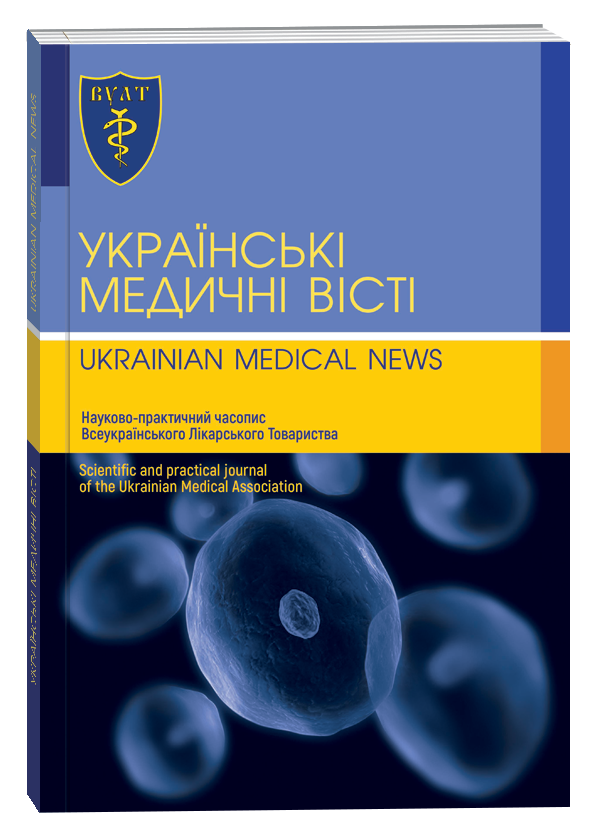PREPARATION FOR PROSTHETIC TREATMENT IN CONDITIONS OF SECONDARY DENTAL-ALVEOLAR DEFORMITIES OF THE VERTICAL TYPE USING MINI-IMPLANTS
DOI:
https://doi.org/10.32782/umv-2025.1.1Keywords:
secondary dentoalveolar deformities (SSD), mini-implants, intrusion, periodontiumAbstract
Despite the rapid development of dentistry as a science and the growing popularity and wide application of preventive measures, tooth loss due to caries remains a major challenge that modern prosthodontists aim to address [1; 2; 12]. Violation of the integrity of the dental arch leads to a complex of morphological, functional, and aesthetic changes that significantly complicate the diagnosis and treatment of such patients [3; 10; 11; 13].List of Abbreviations: SSD – secondary dentoalveolar deformities; TRG – teleradiography; CT – computed tomography.Aim: To optimize the treatment of pathological changes in the dentoalveolar system in patients with partial edentulism complicated by secondary dentoalveolar deformities by developing and implementing a protocol for preparing patients of various ages with vertical-type secondary deformities of the dental-alveolar form for prosthetic rehabilitation across all Kennedy classification classes.Materials and Methods: A total of 70 patients with secondary dentoalveolar deformities were enrolled for prosthetic treatment, including 39 (55.71%) women and 31 (44.29%) men. The patients were divided into two main clinical groups: Group 1 – 45 individuals (64.29%) with bounded edentulous spaces (Kennedy Classes III– I), and Group 2 – 25 individuals (35.71%) with free-end edentulous spaces (Kennedy Classes I–II). The clinical examination was conducted according to the generally accepted methodology, supplemented with additional diagnostic techniques such as occlusiography, intraoral functionography, biometric analysis of diagnostic models, and radiographic methods (intraoral periapical radiographs, orthopantomography, computed tomography, and teleradiography). During the oral examination, attention was paid to the shape of the dental arches, changes in the position of the teeth in the vertical, transverse, and sagittal planes, the degree of disruption in occlusal contacts, and occlusal function was assessed using the T-scan computerized system. Most patients (45 individuals, 64.29%) had vertical-plane secondary deformities, 14 (20.00%) had horizontal deformities, and 11 (15.71%) had combined deformities.Results: Following the protocol outlined in our patented method “Method of preparation for prosthetic treatment in conditions of secondary dentoalveolar deformities,” patent No. 144644 dated October 12, 2020, 11 patients with vertical-type secondary dental-alveolar deformities were treated. The essence of the method involves avoiding excessive masticatory loading on the periodontium of displaced teeth and fabrication of prosthetic constructions that compromise the integrity of the remaining dentition. Instead, mini-implants were placed in the bone tissue near the displaced teeth, and elastic or spring traction was applied to achieve the necessary intrusion of the affected tooth or group of teeth.The technical outcome lies in the use of mini-implants with controlled traction (elastic or spring-based) to achieve selective intrusion.A distinctive feature of the method is that intrusion of displaced teeth does not require the creation of increased masticatory pressure on the periodontal structures. In cases of bounded edentulous spaces, the opposing teeth do not require preparation and can remain intact. For free-end edentulous spaces, there is no need for removable partial dentures, which helps prevent further bone atrophy. Moreover, tooth movement can be more precisely directed by adjusting the placement of mini-implants. Conclusions: Intrusion of displaced teeth was achieved without applying excessive occlusal load on the periodontium. The direction of tooth movement could be more precisely controlled due to the ability to select optimal mini-implant placement sites.
References
1. Антоненко А.І. Роль деяких етіологічних чинників у виникненні зубощелепних аномалій. Вісник стоматології. 2007. № 3. С. 34–36.
2. Борисенко А.В., Шінкарук-Диковицька М.М. Частота ураження карієсом молярів у соматично здорових чоловіків із різних регіонів України, за даними стоматологічного обстеження та конусно-променевої комп’ютерної томографії. Biomedical and Biosocial Anthropology. 2014. № 23. С. 80–86.
3. Головко Н.В. Профілактика зубощелепних аномалій. Вінниця : Нова книга, 2005. 252 с.
4. Дмитренко М.І. Порівняльний аналіз результатів лікування пацієнтів із зубощелепними аномаліями, ускладненими скупченістю зубів. Актуальні проблеми сучасної медицини : вісник української медич- ної стоматологічної академії. 2013. Т. 13. № 43. С. 36–39.
5. Дорубець А.Д., Король М.Д., Коробєйніков Л.С. Поширеність дефектів зубних рядів та потреба у відновленні їх безперервності. Український стоматологічний альманах. 2007. № 1. C. 55–57.
6. Дрогомирецька М.С., Мирчук Б.М., Дєньга О.В. Втрата постійних зубів та розповсюдженість зубощелепних деформацій у дорослих. Медичні перспективи. 2010. № 1. C. 68–75.
7. Захарова Г.Є. Зубощелепні деформації при втраті перших постійних молярів. Український науково-медичний молодіжний журнал. 2007. № 4. С. 78–81.
8. Дорошенко С.І., Кульгінський Є.А., Дорошенко К.В., Федорова О.В. Комплексна підготовка до зубного протезування пацієнтів із вторинними зубощелепними деформаціями, пов’язаними з втратою зубів. Український стоматологічний альманах. 2011. № 5. С. 76–98.
9. Мунтян Л.М., Юр А.М. Частота виникнення, поширеність вторинних часткових адентій та профілактика вторинних зубощелепних деформацій в осіб молодого віку. Український стоматологічний альманах. 2010. № 4. С. 57–58.
10. естеренко О.М. Оцінка перебудови кісткової тканини щелеп у дорослих пацієнтів у ретенційному періоді ортодонтичного лікування. Полтава, 2008. 165 с.
11. Ожоган З.Р., Вдовенко Л.П. Особливості клінічної картини дефектів зубних рядів в осіб молодого віку. Дентальные технологии. 2006. № 3/6. С. 19–21.
12. Орнат Г.С., Рожко М.М. Необхідність протезування дефектів зубних рядів на нижній щелепі. Український медичний альманах. 2010. № 2. C. 47–48.
13. Павленко О.В., Хохліч О.Я. Зубощелепна система як взаємозв’язок елементів жування, естетики та фонетики. Медицина транспорту України. 2012. № 1. С. 86–92.
14. Потапчук А.М., Рівіс О.Ю. Застосування скелетної опори на мініімплантати при лікування зубощелепних аномалій (огляд літератури). Вісник стоматології. 2013. № 3 (84). С. 100–102.
15. Дорошенко С.І., Кульгінський Є.А., Ієвлєєва Ю.В. та ін. Розповсюдженість зубощелепних аномалій та деформацій, а також дефектів зубів та зубних рядів серед дітей шкільного віку м. Києва. Вісник стоматології. 2009. № 2. С. 76–81.
16. Смаглюк Л.В., Смаглюк В.І. Важливість комплексної стоматологічної допомоги в реабілітації пацієнтів із зубощелепними аномаліями. Український стоматологічний альманах. 2012. № 5. С. 61–72.
17. Reynders R., Ronchi L., Ladu L., et al. Barriers and facilitators to the implementation of orthodontic mini- implants in clinical practice : a protocol for a systematic review and meta-analysis. Syst Rev. 2016. Vol. 5. P. 163.
18. Chatzigianni A., Keilig L., Duschner H., et al. Comparative analysis of numerical and experimental data of orthodontic mini-implants. European Journal of Orthodontics. 2011. V. 33. P. 468–47526.
19. Guillaume B. Dental implants : A review. Morphologie. 2016. Vol. 100 (331). P. 189–198.
20. Hughes T.J. A way to find anchorage when missing molar teeth. Int. J. Orthod. Milwaukee. 2012. Vol. 23. № 3. P. 75–77.
21. Rodriguez J., Suarez F., Chan H., et al. Implants for orthodontic anchorage: success rates and reasons of failures. Implant Dentistry. V. 23. P. 155–161.
21. Kim H.Y., Kim S.C. Bone cutting capacity and osseointegration of surface treated orthodontic mini-implants. Korean Journal of Orthodontics. 2016. Vol. 46 (6). P. 386–394.
22. Isola G., Matarese G., Cordasco G., et al. Mechanobiology of the tooth movement during the orthodontic treatment : a literature review. Minerva Stomatologica. 2016. Vol. 65 (5). P. 299–327.
23. Melsen B., Dalstra M. Melsen B. Skeletal anchorage in the past, today and tomorrow. Orthod Fr. 2017. Vol. 88 (1). P. 35–44.
24. Pimentel A.C., Manzi M.R., Prado Barbosa A.J., et al. Mini-Implant Screws for Bone-Borne Anchorage: A Biomechanical In Vitro Study Comparing Three Diameters. Internal Journal of Oral and Maxillofacial Implants. 2016. Vol. 31 (5). P. 1072–1076.








